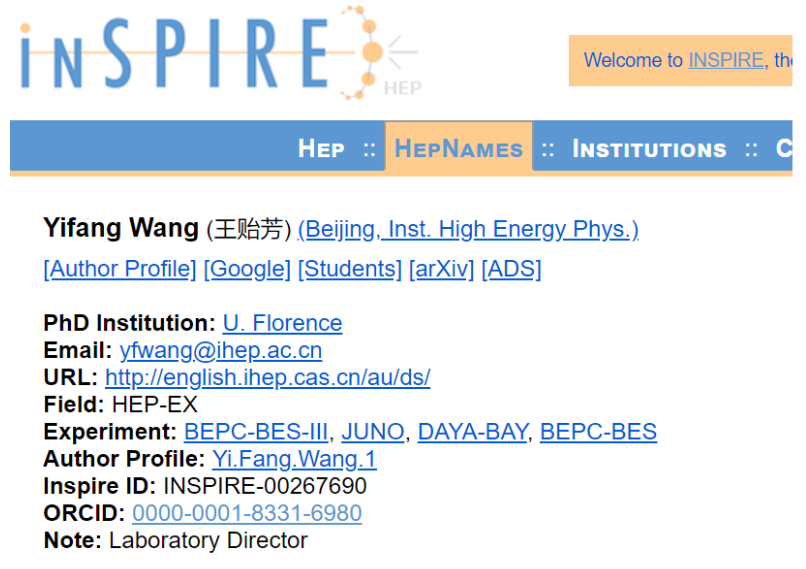ORCID in China
This post was jointly authored by Channing Chai from Social Science Academic Press, Ruirong Liu from Institute of High Energy Physics, Jiao Li from Chinese Academy of Agricultural Sciences and TsingHua University Library
ORCID in China now
 In September 2019, ORCID and Social Science Academic Press (SSAP) hosted a workshop in Beijing tailored for publishers, librarians, research managers, research institutions, funders, and associations. We were glad to have this opportunity to engage with communities in China. As an open, not-for-profit organization, ORCID is a community effort – both membership and community support have allowed ORCID to flourish. In this blog post, we will share more about ORCID members from mainland China.
In September 2019, ORCID and Social Science Academic Press (SSAP) hosted a workshop in Beijing tailored for publishers, librarians, research managers, research institutions, funders, and associations. We were glad to have this opportunity to engage with communities in China. As an open, not-for-profit organization, ORCID is a community effort – both membership and community support have allowed ORCID to flourish. In this blog post, we will share more about ORCID members from mainland China.
Users
Since January 2019, China accounts for the second largest source of traffic to the ORCID Registry (with the U.S. being the largest). About two-thirds are new users and one-third are returning users. This distributional pattern indicates that not only do we have a steady stream of new users to the ORCID Registry, but many existing users regularly return.
Members and Integrations
As of November 2019, ORCID has four members in mainland China, each representing various workflows in the research ecosystem that ORCID serves: Publishing, Research Institutes, [SECTOR NAME for CAAS AII], and Research Funding. Read on to learn more about their integrations and how ORCID has been adopted by each.
Publishing: Social Science and Academic Press (China) (SSAP)
SSAP was the first publisher from China to sign the ORCID Publisher open letter. Their platform SSAPID integrates with ORCID to provide author disambiguation and literature management in Humanities and Social Sciences. Now researchers using SSAP’s publishing platform can link their SSAPID to their ORCID record to ensure their ORCID record is updated with their works and funding information from SSAP in a timely, accurate way.

SSAP President and ORCID Board member Shouguang Xie said “ORCID provides a unique researcher identifier, which is widely supported in the global research and publishing community. Moreover, it has been adopted by many countries under national grants. ORCID now has become a part of research infrastructure. It has been many years since SSAP put researcher identification as well as connecting research outputs. As of now, we had some great results. Supporting and adopting ORCID iDs is part of our initiative to promote academic development as a publisher.”
Research Institute: The Institute of High Energy Physics (IHEP), Chinese Academy of Sciences
IHEP joined ORCID as a member in November 2014 with the Library and Information Services working closely with ORCID. IHEP invited more than 1000 affiliated researchers to connect their iD to the IHEP platform in 2015, and through these connections has shared over 10,000 work items with these researchers through their ORCID record. In June 2018 they started to push about 12,000 works (included in Science Citation Index (SCI)) to their researchers’ ORCID records.

In addition to authentication, the IHEP Library and Information Services encouraged their researchers to authenticate ORCID iD in any research workflow that supports ORCID. For instance, as a core member of inSPIRE, IHEP promotes connecting ORCID iD into authors’ inSPIRE profile and it magnifies the benefits of ORCID iD. In the future, IHEP expressed their anticipation for using ORCID iD to track research outputs affiliated with IHEP more effectively, and develop some communication campaigns with ORCID for their researchers.


Research Institute: Agricultural Information Institute of the Chinese Academy of Agricultural Sciences (CAAS AII)
In 2017, CAAS AII joined as an ORCID member and started integrating ORCID into their platform eScientist, which supports agricultural science researchers to both manage and present their research outputs.
Ever since joining ORCID, CAAS AII has sought to continually improve their API and Registry which has benefitted the development of eScientist. ORCID regularly supports and offers suggestions for eScientist.
As of now, eScientist has collected authentication from researchers of 77 different research institutes, and offers support for their academicians in maintaining their eScientist profiles.

University Library: TsingHua University Library
TsingHua University joined as an ORCID member in October 2015 and are currently integrating ORCID into their Tsinghua University Researcher ID (ThuRID). The integration will provide researcher disambiguation and connect ThuRID with ORCID.
In the process of testing their ORCID integrations they discovered ORCID API documentation on sandbox or workflows are all in English. To benefit the Chinese community, they compiled a supporting manual in Chinese to bring more transparency on ORCID implementations.
Next Steps
ORCID relies on community and member support. Since 2014, it has been our pleasure to work with our members in China to fulfill our mission and vision. We look forward to continuing our work with them!
We count on our community to let us know about any upcoming seminars or workshops that would benefit from learning about ORCID. Contact us directly or follow us on Twitter or LinkedIn!
